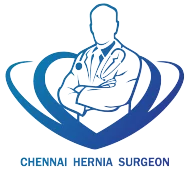Do you feel a bulge in your abdomen that becomes prominent when you do an activity? Then you probably have a hernia. A hernia is a bulge in your body that occurs when an organ or tissue structure protrudes through the weak abdominal wall surrounding it.
There are several types of hernia that are classified based on the location of the hernia in the body. A supraumbilical hernia is a type of hernia that occurs in the supraumbilical region.
This article discusses in detail what a supraumbilical region is and the causes and complications you will have if you have a hernia in that site.
Table of Contents
ToggleWhat is a supraumbilical region?
The supraumbilical region is situated above the umbilical region and below the xiphoid process. Hernias like supraumbilical hernia and epigastric hernia are common in this region.
What is a supraumbilical hernia?
A supraumbilical hernia is an abnormal protrusion of an organ or part of an organ through a defect in the muscle structure of the abdominal wall above the umbilicus and below the xiphisternum.
In simple words, a supraumbilical hernia is located just above the belly button. Though it is located near the umbilicus, it does not come under umbilical hernia. It is a specific type of epigastric hernia. A supraumbilical hernia does not repair itself and mostly requires surgery.
What are the Causes of supraumbilical Hernia?
Below are some of the major causes of a supraumbilical hernia.
- Weak abdominal muscles (due to aging, trauma, or multiple pregnancies)
- Incomplete closure of the abdominal muscle wall during birth (in babies)
- Congenitally weakened epigastric fascia
- Increase in intra-abdominal pressure
- Overweight
- Increase in abdominal pressure due to chronic constipation
- Increase in abdominal pressure due to chronic cough
- Too much straining or lifting of heavy objects
Complications of supraumbilical hernia
A supraumbilical hernia is a serious issue and can lead to complications if not treated for a long time. Some complications that may arise from this condition are listed below.
1. Incarceration
Incarceration happens when the herniated organ cannot be redacted back to its original place. This can lead to bowel obstruction, intense pain, nausea & volition. It can only be treated through surgery.
2. Strangulation
Strangulation happens when the blood supply is cut off from the herniated organ, causing the organ to become inflamed and infected. This is a serious medical emergency and should be treated immediately as it could lead to necrosis (tissue death).
What are the other types of Hernias?
Apart from supraumbilical hernia, there are other types of hernias that can affect a person. These hernias are classified based on their location in the human body. Below are some of the most common types of hernias.
1. Inguinal hernia: An inguinal hernia occurs in the groin areas between the lower abdomen and the thigh. There are direct and indirect inguinal hernias.
2. Femoral hernia: A femoral hernia appears in the areas between the groin and thigh. The hernia sac pushes through the weak muscle wall into the femoral canal.
3. Spigelian hernia: A Spigelian hernia is a rare type of hernia that occurs when abdominal content pushes through a defect in the Spigelian fascia. This condition typically requires surgical intervention, with spigelian hernia repair being the standard treatment
4. Lumbar hernia: A lumbar hernia occurs when the intraperitoneal and extraperitoneal contents push through the posteriolateral abdominal wall.
5. Traumatic hernia: A Traumatic Abdominal Wall Hernia (TAWH) occurs when a blunt object attacks the abdominal wall with high or low velocity. This can weaken the abdominal wall and cause hernia.
6. Umbilical hernia: An umbilical hernia occurs when a loop of intestine pushes through the abdominal wall near the umbilicus (belly button).
7. Incisional hernia: An incisional hernia occurs in the site of a previous incision. It happens when the organs around the incision site push through the weak muscle structure.
Conclusion
A supraumbilical hernia is a serious issue and can become complicated if left untreated for a longer period of time. If you have a hernia, you can easily identify it by feeling a protrusion in the area of discomfort.
If you identify a protrusion, don’t delay; immediately visit a hernia surgeon to get it treated. The sooner you treat it, the lesser your chances of complications.
Dr. K. Amilthan MBBS., MS., FMAS., FALS.
Heal Your Hernia Now:
- 20+ Years of Experience
- 1,000+ Surgeries
Your Journey to Wellness Begins with us.
FAQ's
- Recurrence: hernia may reappear in the same site of surgery
- Infection & bleeding
Yes, a supraumbilical hernia is a serious issue and can become complicated if left untreated for a longer period of time. It does not repair itself and mostly requires surgery intervention.
A supraumbilical hernia is a serious issue and can lead to complications if not treated for a long time. Some complications that may arise from this condition are listed below.
1. Incarceration: Incarceration happens when the herniated organ cannot be redacted back to its original place.
2. Strangulation: Strangulation happens when the blood supply is cut off from the herniated organ, causing the organ to become inflamed and infected.

Dr. Amilthan
Dr. Amilthan is a renowned laparoscopic hernia surgeon based in Chennai, with over 20 years of experience in general surgery. He completed his MBBS and MS in General Surgery at Kilpauk Medical College and Government Royapettah Hospital in Chennai.
- All Posts
- Hernia Blog

Which Doctor should you consult for Hernia? You can Consult a general surgeon or a hernia specialist for evaluation and...

A hernia occurs when an organ or any other part of your body pushes through the muscle and surrounding tissue...

An inguinal hernia occurs when the organs push through and bulge against the weak muscles of the abdomen. An effective...

